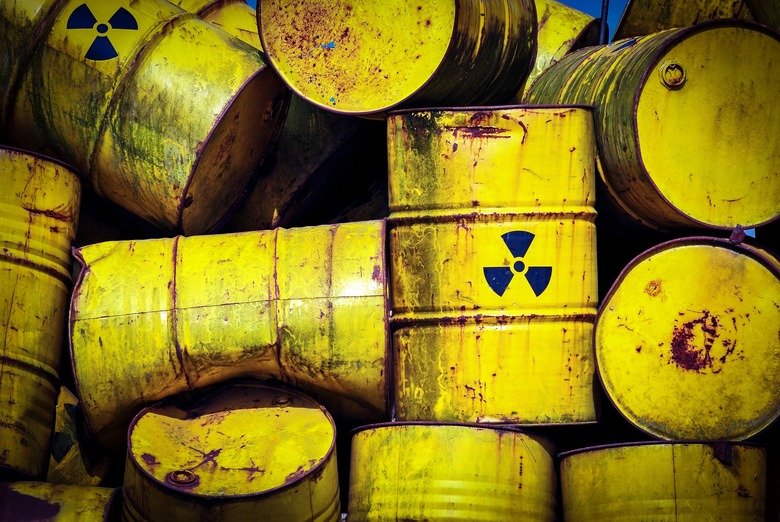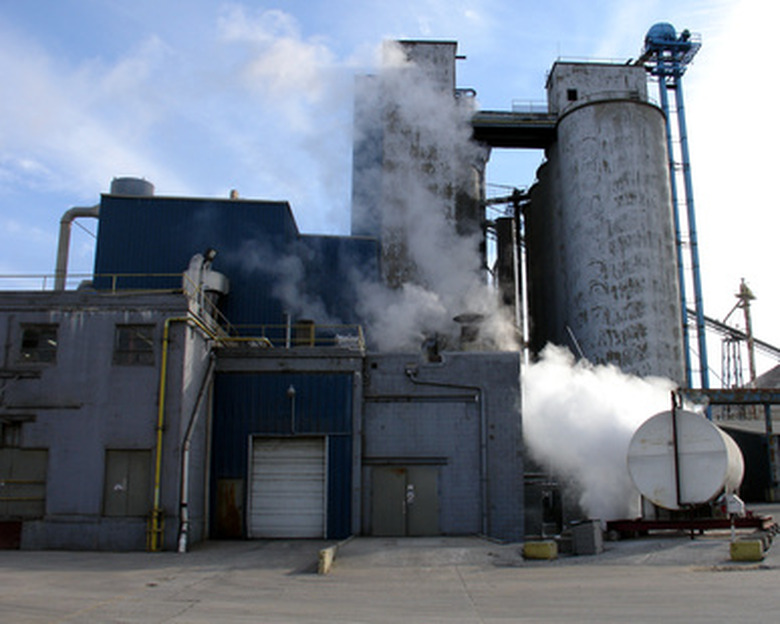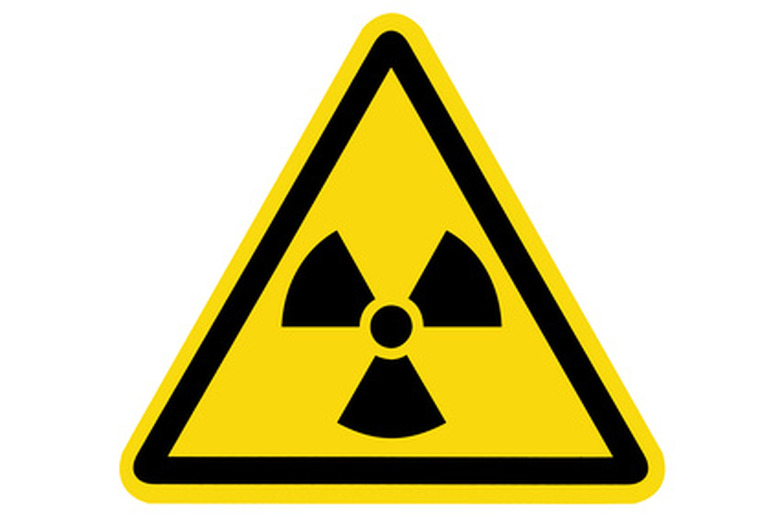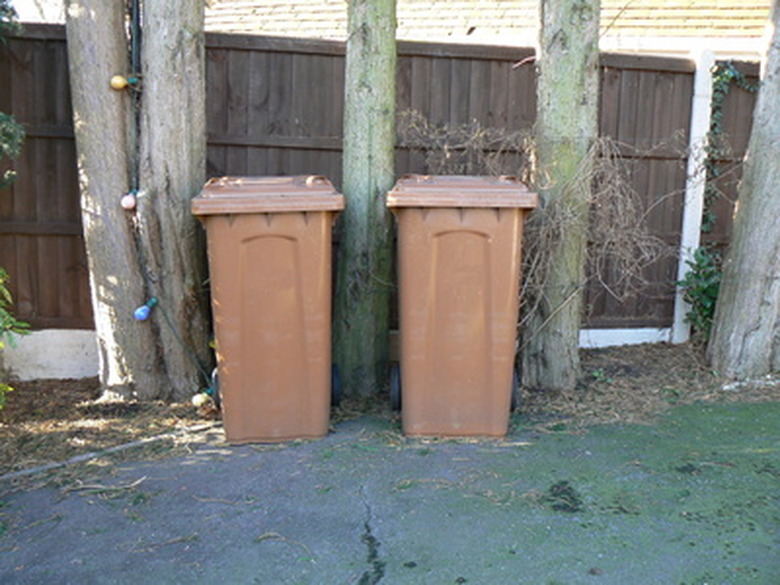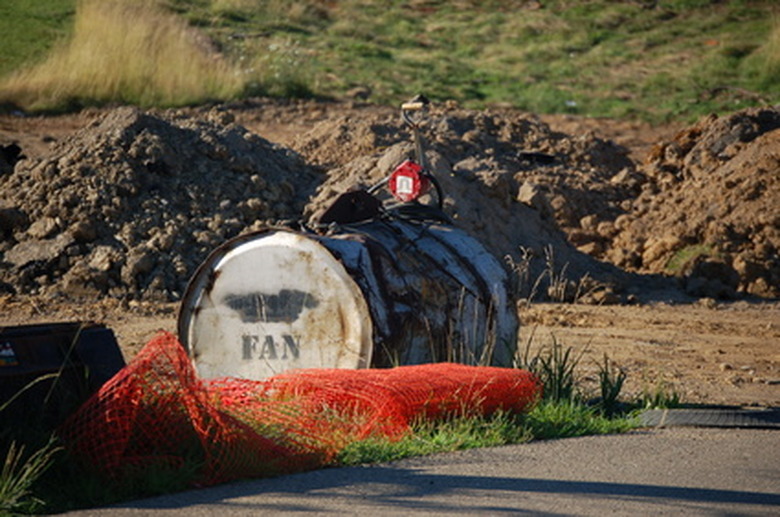What Are The Causes Of Hazardous Waste?
Hazardous waste refers to discarded waste materials that are harmful to human health or the environment, according to the U.S. Environmental Protection Agency (EPA). The Resource Conservation and Recovery Act defines the term "hazardous waste" based on chemical characteristics or as wastes specifically listed in the regulations. Hazardous waste is created, or more precisely solid waste is classified, as different types of hazardous waste if it meets certain regulatory criteria. Hazardous waste may be sourced from materials used by industry or individuals.
Listed Waste
Listed Waste
Waste materials are classified as hazardous waste if they are listed specifically in the federal regulations. Listed wastes are judged as hazardous at any concentration when not handled properly. Categories of listed waste include F-wastes (nonspecific industry sources), K-wastes (specific industry sources) and P-wastes and U-wastes (discarded, unused commercial chemical products).
Characteristics of Hazardous Waste
Characteristics of Hazardous Waste
Waste materials are classified as hazardous if they exhibit any of four hazardous physical or chemical characteristics and if they are not otherwise exempt from the regulations. Hazardous characteristics include ignitability, reactivity, corrosivity and toxicity as measured by laboratory tests. If any of the characteristics meet a threshold level, the waste is classified as hazardous.
Universal Waste
Universal Waste
Universal wastes are created by the disposal of batteries, pesticides, mercury-containing equipment and mercury-containing light bulbs. The EPA lists special provisions for their disposal to facilitate proper handling, which reduces the volume of the materials that end up in local landfills.
Mixed Waste
Mixed Waste
Mixed waste is created by a mixture of two types of wastes: hazardous waste, either listed or characteristic waste, and low-level radioactive waste regardless of the level of radioactivity.
Household Hazardous Waste
Household Hazardous Waste
Individuals generate household hazardous waste, which is often managed by local governments. Individuals generate household hazardous waste by discarding spent household chemicals that exhibit hazardous characteristics. Many local governments have set up special programs to accept, classify and dispose of disparate, small-volume containers using guidance from the EPA.
Hazardous Waste Sites
Hazardous Waste Sites
In contrast to the above types of hazardous waste, the term "hazardous waste site" refers to the polluted subsurface environment rather than discarded and toxic solid wastes. A hazardous waste site can be caused by an uncontrolled release of pollutants from an abandoned facility or an industrial, commercial or dump site. Regardless of the original waste released into the environment, the soil or water removed during cleanup from a hazardous waste site will be analyzed for hazardous characteristics. Depending on the value of its hazardous characteristics, the waste soil and water may be classified as hazardous waste, in addition to being removed from a polluted hazardous waste site.
Cite This Article
MLA
Roemmel, Janet. "What Are The Causes Of Hazardous Waste?" sciencing.com, https://www.sciencing.com/list-6017951-causes-hazardous-waste-/. 22 November 2019.
APA
Roemmel, Janet. (2019, November 22). What Are The Causes Of Hazardous Waste?. sciencing.com. Retrieved from https://www.sciencing.com/list-6017951-causes-hazardous-waste-/
Chicago
Roemmel, Janet. What Are The Causes Of Hazardous Waste? last modified March 24, 2022. https://www.sciencing.com/list-6017951-causes-hazardous-waste-/
